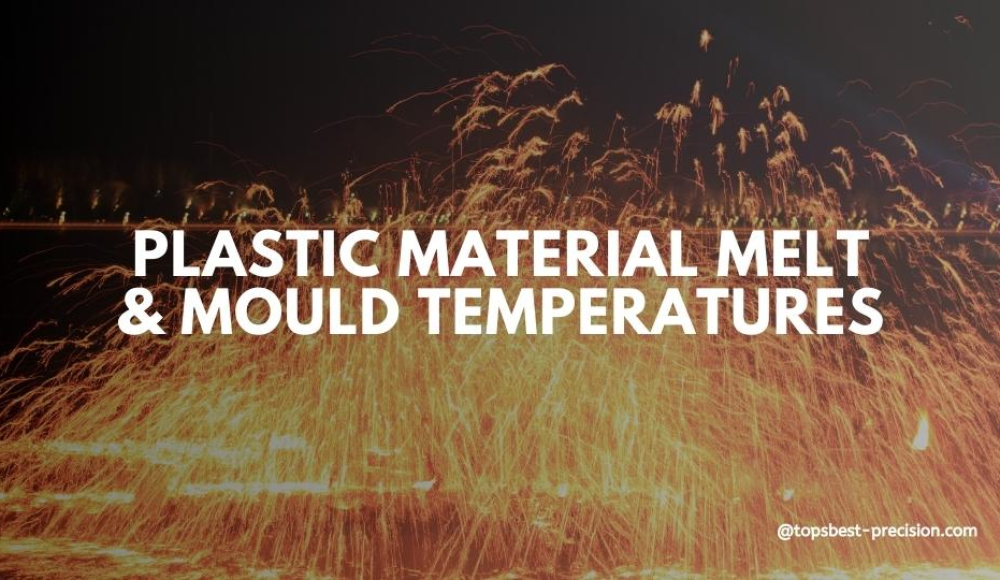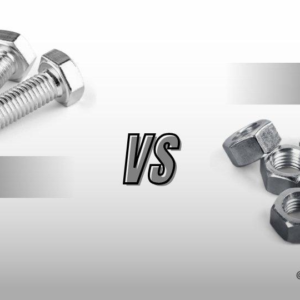Los fabricantes y moldeadores deben comprender las temperaturas de fusión y moldeo de los plásticos.. Las fluctuaciones de temperatura durante el moldeo por inyección desempeñan un papel importante en el aspecto y la integridad estructural del producto final.. Hablemos de la fusión de materiales plásticos., y temperatura de moldeo desde un aspecto más amplio.
Temperatura de fusión del plástico: Una descripción general
El punto de fusión del plástico define el cambio de fase.. Determina el momento en que el plástico de estado sólido pasa a estado fundido.. En este punto, La tensión entre las cadenas de polímeros reduce las fuerzas intermoleculares.. Se convierte en fluido dentro de las cadenas., mejorar el flujo durante el moldeo por inyección. El punto de fusión no debe definirse como una sola cifra ya que es un rango de puntos.. Este rango muestra la temperatura de trabajo para calentar las máquinas de moldeo cuando sea necesario..
¿Qué es la temperatura del molde de plástico??
La temperatura del molde describe las temperaturas de la superficie de la cavidad.. El diseño correcto facilita la uniformidad térmica en todo el espesor del material.. Las temperaturas variables causan problemas de tensión y contracción por contracción variable.. Esto tiene consecuencias negativas como deformaciones o deformaciones en las piezas al moldearse.. La temperatura del molde juega un papel vital en el ciclo de moldeo y la calidad de la pieza de uso final.. En el ajuste de temperatura del molde, debe mantenerse al nivel más bajo desde el principio.
Temperatura del material plástico & Tabla de temperaturas del molde
| Materiales plasticos | Rango de temperatura de fusión(℃) | Rango de temperatura del molde(℃) | Temperatura de fusión
Rango (℉) |
Rango de temperatura del molde (℉) |
| ARRIBA | 260-320 | 40-70 | 500-608 | 104-158 |
| PVC-U | 160-210 | 20-60 | 320-410 | 68-140 |
| MASCOTA (Amorfo) | 260-280 | 20-30 | 500-536 | 68-86 |
| Nylon 6 (30% novia) | 250-290 | 50-90 | 482-554 | 122-194 |
| Nylon 12 | 190-200 | 40-110 | 374-392 | 104-230 |
| polipropileno (30% novia) | 250-290 | 40-80 | 482-554 | 104-176 |
| Poliéster PBT | 240-275 | 60-90 | 464-527 | 140-194 |
| Acrílico | 220-250 | 50-80 | 428-482 | 122-176 |
| PEAD | 210-270 | 20-60 | 410-518 | 68-140 |
| abdominales | 190-270 | 40-80 | 374-518 | 104-176 |
| Nylon 6 | 230-290 | 40-90 | 446-554 | 104-194 |
| SAN | 200-260 | 50-85 | 392-500 | 122-185 |
| policarbonato | 280-320 | 85-120 | 536-608 | 185-248 |
| MASCOTA (Semicristalino) | 260-280 | 20-30 | 500-536 | 68-86 |
| Acetal | 180-210 | 50-120 | 356-410 | 122-248 |
| Nylon 6/6 (33% novia) | 280-300 | 40-90 | 536-572 | 104-194 |
| PVCP | 170-190 | 20-40 | 338-374 | 68-104 |
| polipropileno (homopolímero) | 200-280 | 30-80 | 392-536 | 86-176 |
| TAXI | 170-240 | 40-50 | 338-464 | 104-122 |
| Nylon 6/6 | 270-300 | 40-90 | 518-572 | 104-194 |
| Poliestireno | 170-280 | 30-60 | 338-536 | 86-140 |
| Poliestireno (30% novia) | 250-290 | 40-80 | 482-554 | 104-176 |
| Nylon 11 | 220-250 | 40-110 | 428-482 | 104-230 |
| polipropileno (copolímero) | 200-280 | 30-80 | 392-536 | 86-176 |
| Nylon 6 (30% novia) | 250-290 | 50-90 | 482-554 | 122-194 |
| OJEADA | 350-390 | 120-160 | 662-734 | 248-320 |
| polipropileno (30% Lleno de talco) | 240-290 | 30-50 | 464-554 | 86-122 |
Consideraciones clave para las temperaturas de fusión y molde en plásticos
Al considerar el plástico derretido, y temperaturas del molde, se deben tener en cuenta varios factores. Por ejemplo:
Expansión térmica
Los materiales plásticos cambian de volumen cuando se calientan.. Porque tienen un alto coeficiente de expansión térmica.. La presión atmosférica afecta significativamente el proceso de expansión.. Presiones más bajas pueden mejorar la tasa de expansión.. Como consecuencia, Las temperaturas del molde y del plástico fundido pueden requerir ligeros ajustes en estas condiciones..
Efecto de las impurezas sobre los puntos de fusión
Hay evidencia de que los puntos de fusión del plástico se reducen por las impurezas.. Estos pueden estar presentes en estos materiales.. Esta depresión del punto de fusión parece un proceso de mezclar sal con hielo.. Las impurezas/interferencias pueden alterar la disposición ordenada de las cadenas de polímeros en un material.. Esta interrupción puede conducir a mejores propiedades de flujo., Permitir que el polímero se procese más fácilmente a temperaturas de fusión más bajas..
Influencia de la estructura molecular
Los polímeros cristalinos tienen una estructura definida y puntos de fusión específicos.. Esta propiedad garantiza que se logren bien los ajustes de temperatura durante el procesamiento.. El conocimiento de este aspecto ayuda a obtener el mejor resultado en las actividades de fabricación..
Propiedades de los polímeros amorfos
Los polímeros amorfos no tienen estructura cristalina.. Sus cadenas poliméricas son atácticas.. Conduce a una menor controlabilidad de la temperatura de fusión.. Su proceso de fusión ocupa un rango mayor en comparación con el proceso de congelación.. De este modo, Se requiere una categorización de temperatura más amplia para estos materiales amorfos..
Puntos de fusión y temperaturas de procesamiento de plásticos de grado técnico
Existen muchos tipos de plásticos para diversos usos en varias industrias., y cada uno tiene sus caracteristicas.
Polietileno
Las películas de polietileno son comunes para varias aplicaciones industriales.. Incluyen automoción., construcción, y envasado de alimentos. Polietileno de alta densidad (PEAD) Es ampliamente utilizado en contenedores y tuberías.. El punto de fusión estándar del HDPE es de 120 a 180 °C y las temperaturas del molde suelen estar entre 180 y 220 °C.. Polietileno de baja densidad (PEBD) Tiene mejores características de flexibilidad en películas de embalaje.. El LDPE tiene un punto de fusión entre 105 y 115°C y temperaturas del molde de 150 a 180°C. Cada versión está protegida contra las influencias climáticas y es adecuada para su uso en exteriores..
polipropileno
El polipropileno se caracteriza por su alto punto de fusión y su inactividad química.. El material generalmente tiene un rango de temperatura de fusión de 160-170°C., y temperaturas del molde de 180-200°C. Las piezas eléctricas, como las cubiertas de las baterías y los parachoques de los automóviles, se pueden fabricar con polipropileno.. Además, El PP tiene un largo ciclo de vida que lo hace viable para su uso en muebles y electrodomésticos..
Poliestireno
El poliestireno tiene una resistencia al calor relativamente baja.. El punto de fusión típico del PS es de 100 a 120 °C y las temperaturas del molde son de 150 a 180 °C.. Este plástico se utiliza habitualmente en envases de alimentos., tazas de espuma, y contenedores. Las características económicas y térmicamente eficientes aumentan aún más su idoneidad para diversos usos..
Poliamida
La poliamida se conoce como nailon., un material de ingeniería fuerte. Tiene una temperatura de fusión de 220-260°C y una temperatura de molde de 250-260°C.. Algunos usos comunes son engranajes y cojinetes debido a su resiliencia., y fuerza. Las características adicionales incluyen propiedades autolubricantes que lo hacen apropiado para su uso en sistemas transportadores..
Cloruro de polivinilo (CLORURO DE POLIVINILO)
El cloruro de polivinilo es un termoplástico., Se utiliza en aplicaciones donde se necesita resistencia contra el fuego.. Generalmente tiene un punto de fusión de 160 – 210°C mientras la temperatura del molde para el polímero es 180 –190°C. El PVC se utiliza ampliamente en la construcción., especialmente en tuberías y accesorios. La resistencia química del material es útil en procesos de tratamiento de agua..
Pensamientos finales
En resumen, Los fabricantes necesitan conocer el punto de fusión., y temperaturas del molde de plásticos. Porque tiene un gran impacto en el rendimiento y la usabilidad del producto.. Las fluctuaciones de temperatura son críticas para la calidad del producto., así como en la gestión de cómo se fabrican los productos.. Hoy, La demanda de aplicaciones de fabricación requiere soluciones de materiales ligeros y duraderos para satisfacer las necesidades del mundo moderno..



